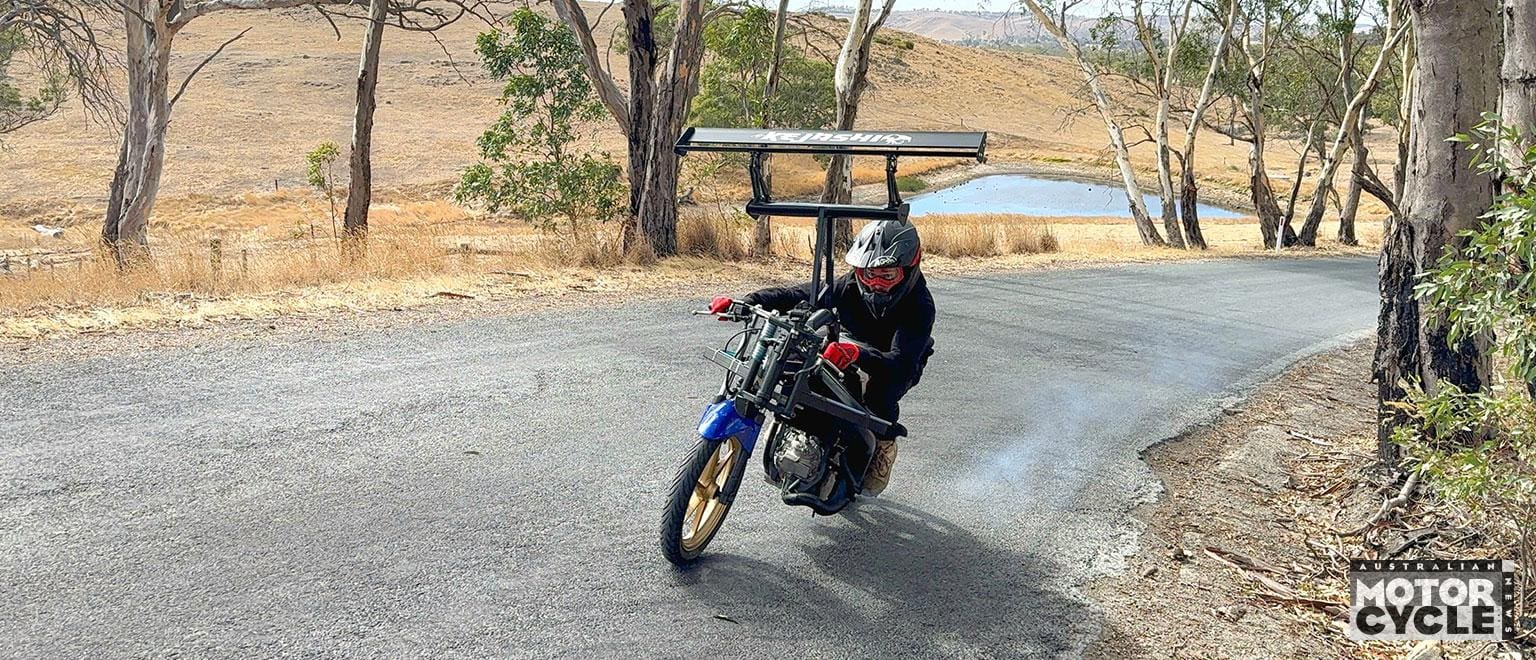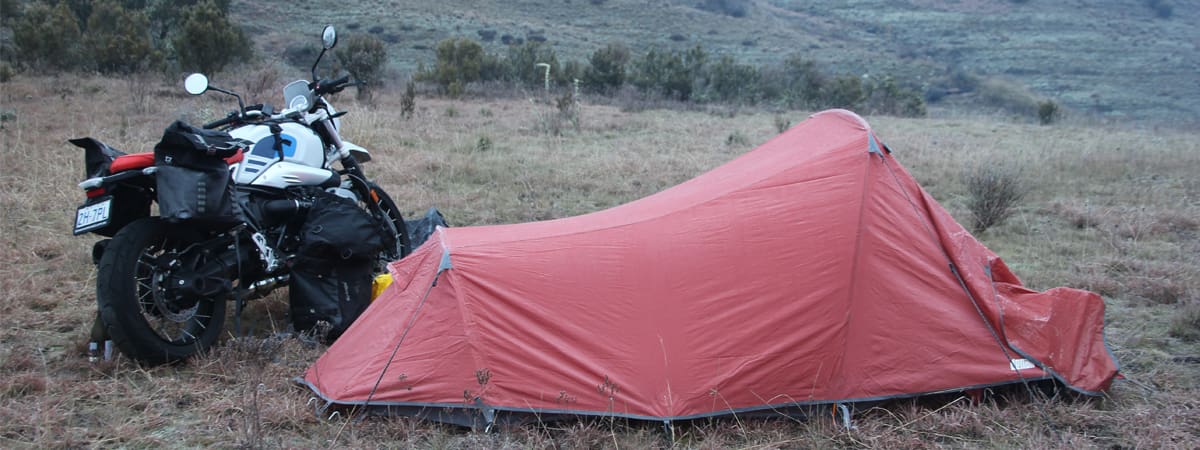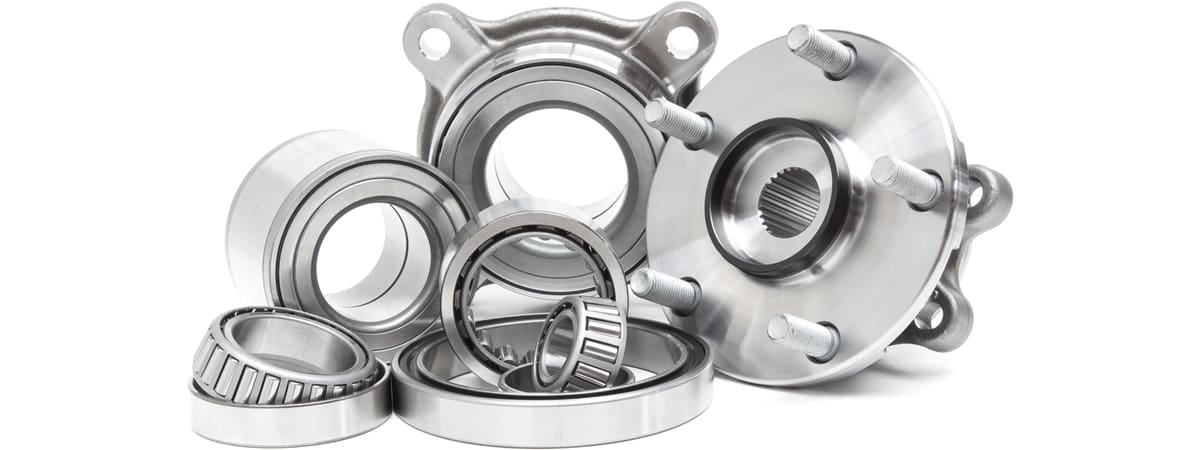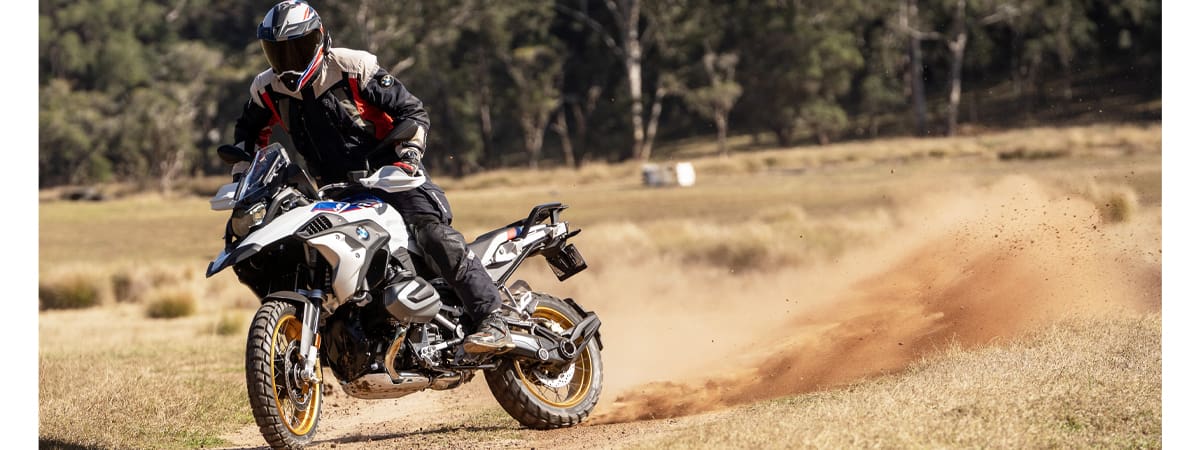Climate change
Never mind the melting polar ice caps, the most devastating consequence of climate change is shed neglect. Too hot? Too cold? Too damp? Do something about it! Even if it’s as simple as buying a fan to circulate air in the hotter months, or a heater to burn the midnight oil on those long winter projects.
Plug up the drafts and insulate the work space as if it were your lounge room. Improve ventilation or even consider air-conditioning if you’re way up north. Whether it be a coffee machine to warm the cockles and perk the enthusiasm, or a bar fridge to keep the motivational amber-oil chilled, make it the place you most want to be. Remember, this is living space in every sense of the word.

Get in the mood
In the same way as climate control works its magic on concentration and creativity, the visual and tactile environment surrounding us has a great effect on our productivity and pleasure. Decorate your workspace as a shrine to everything you love about life on two wheels, or three. Whether it be artfully displaying all the best bits of bike junk you’ve collected, pinning up your AMCN poster collection, or perhaps making hanging mobiles out of your MotoGP memorabilia, get the mood right and the magic will happen. Inspiration is the mother of all mechanical miracles.

Light up
Stumbling around in the dark isn’t the best way to be working on bikes. But, getting the lighting right isn’t easy. No matter how many lights you have installed in your shed, motorcycles have a knack of harbouring corners and crevices stubbornly impervious to illumination. Adequate ceiling-mounted lights are important, particularly above work benches used for tinkering on individual parts. When working on a complete motorcycle, however, the mechanic and the motorcycle itself will cast shadows in all the wrong places. Strip lights strategically placed halfway up the walls or imbedded in your bike bench can often be more effective than a mighty squadron of overhead wattage.
Versatility is the key, so have as many movable light sources as possible. A head torch can be the most useful piece of equipment you’ll ever pull out of the toolbox. Particularly if you’re a night owl in a dimly-lit shed working on the bike you’ve just painted entirely matte black.

Off the floor
On average, people are taller than bikes, so to interact on an intimately investigative level either the human must bow, kneel and grovel around on the floor, or the bike must rise for the occasion. How elaborate your solution to this predicament is will largely depend on your budget. A hydraulic bike bench is the ultimate shed centrepiece as it gives a wide range of height options. The cheaper alternative is to buy or make your own fixed-position bench. Lifting your bike above floor level allows you to tickle your bike’s bellypan without even bending your knees. You’ll be amazed how much easier spannering your steed becomes when approached with a straight back and a better view of all its gubbins.
A mechanic’s wheelie stool and foam mat are the next best thing to a bike bench. Whichever approach is within your means, think about your body’s health and get yourself comfortable.
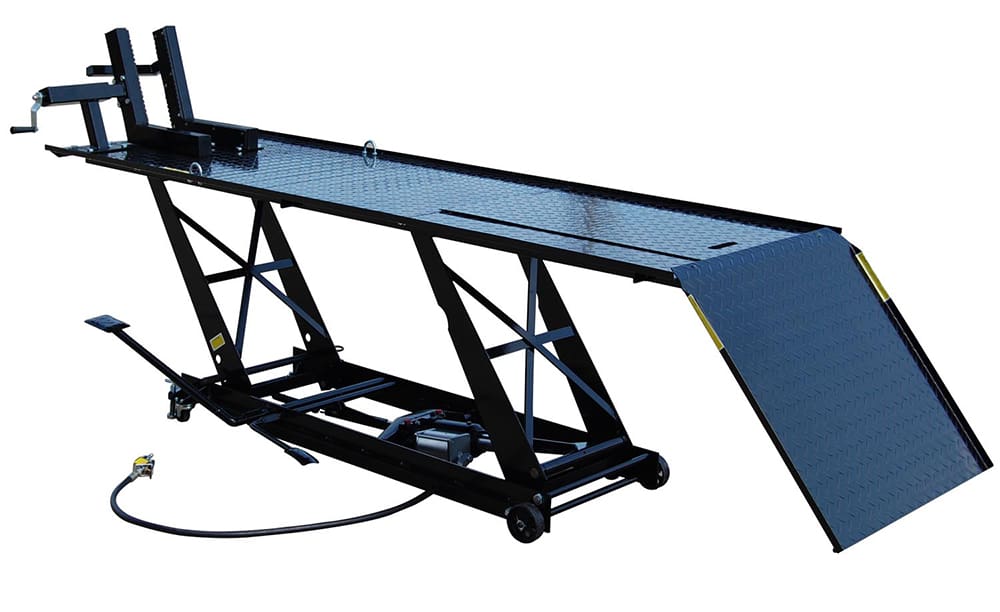
On the bench
At some stage you are going to remove bits from your bike and work on them as sub-assemblies. As the shed floor is no civilised place to be lapping valves, you’ll need a workbench. Whether it be bought or homemade, steel or wood, aim for maximum strength and rigidity. The old folding card table just won’t cut it when shit gets heavy.
Secure your bench to the floor or wall to prevent wobbles when delicate tinkering is required, and to stop bench drift when heavy stuff is being hoofed around. Solidly constructed kitchen cabinets and worktops can be a great way to fit out a workshop. Secondhand kitchen units are cheap, the perfect height, and provide ready-made cupboard space. You can even use the ol’ kitchen sink for cleaning your mucky bits.
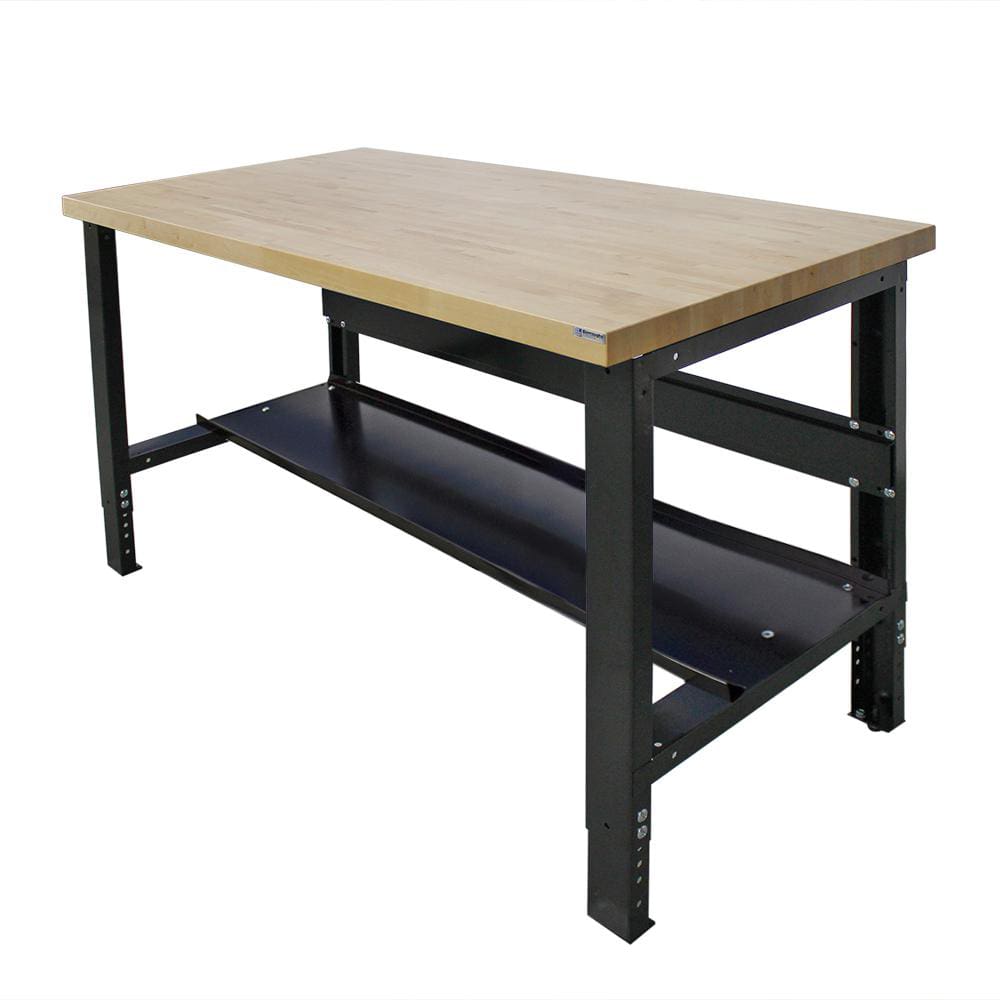
Get a grip
If there’s one thing certain about well-seasoned shed dwellers, it’s that they all have a vice, or two. Get the heftiest one you can afford, not a tiny hobbyist’s vice from the dollar shop. A decent 100-125mm mechanics’, engineers’ or multi-purpose vice is versatile enough for mechanical work, and robust enough for all but the heaviest and most brutal of fabrication jobs. Most important of all, buy some soft jaws or make your own with aluminium plate, and use them religiously. And I don’t mean for restraining live sacrificial offerings to the shed gods. I mean never use an unprotected vice jaw to clamp anything belonging to your beloved motorcycle.

Stash it
Small sheds soon become uninhabitable if storage isn’t carefully considered. Suss out your space and plan ahead to prevent the floor being overrun by bike bits. Under-bench cupboards keep engine parts clean and dust free. A mezzanine platform on the roof joists is ideal for stashing bodywork up out of the way. Get yourself a load of plastic containers of all shapes and sizes for storing parts, keep parts separated into discernible categories – forks, gearboxes, turbo chargers, etc. And label absolutely everything so you still know what the hell it is in 10 years’ time.
Tools deserve special treatment. It’s harder to lose tools and easier to find them when each one has a specific place to live. Shadow boards look great and instantly let you know when something is missing. Laser-cut foam shadow inserts serve the same purpose but can be expensive. However, both these methods can be done the DIY way with a little ingenuity, or a shed load of Googling.
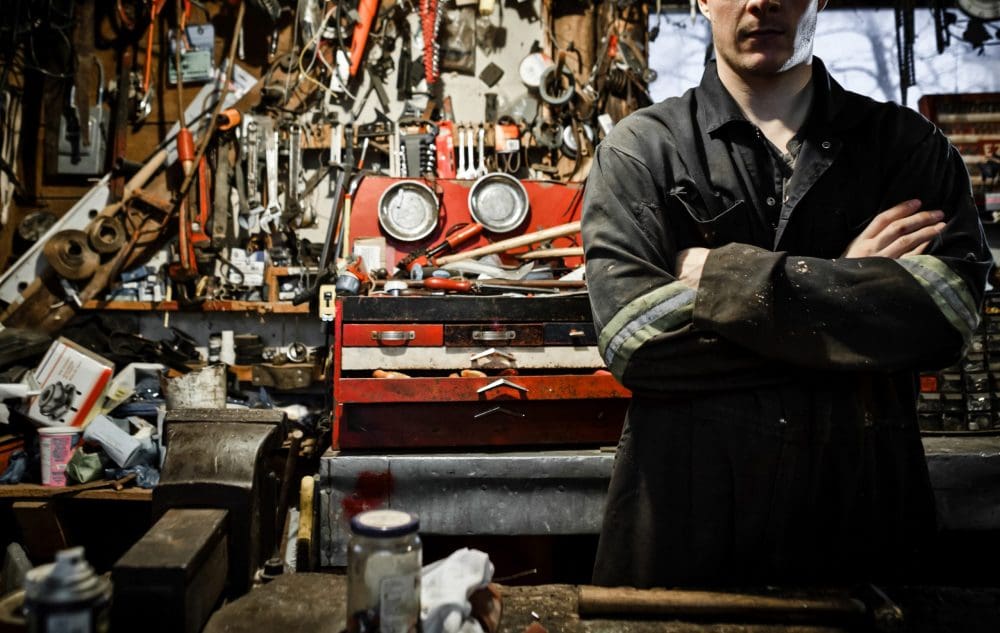
WORDS PAUL YOUNG
